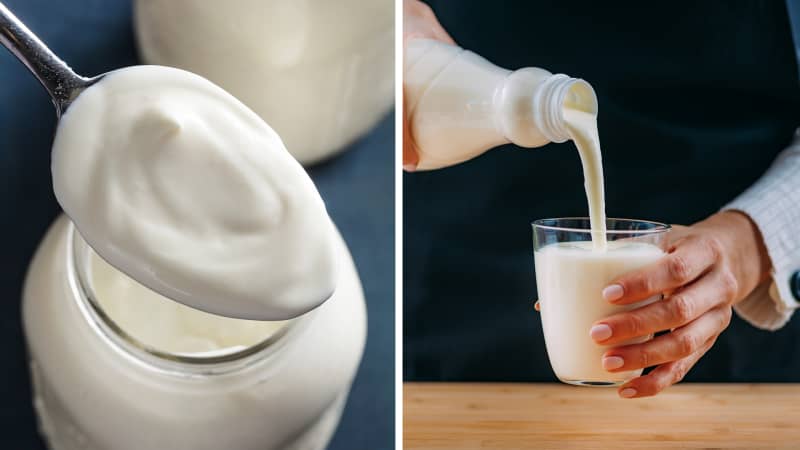Becky asked: “What’s the difference between yogurt and kefir?”
Ask Paul: What Is the Difference Between Yogurt and Kefir?
Published Dec. 8, 2021.

Shortly after our prehistoric forebears first domesticated livestock, they noticed that the animals’ wonderful milk changed if it wasn’t drunk right away. It developed odd flavors and textures, and sometimes it made them sick. But other times, it became tart, and more digestible, and stayed drinkable for weeks. Using the same container for the next batch—the pores of the ceramic or leather bag retaining populations of invisible microbes—helped ensure that it would be good in the same way. Gradually, patterns were established, and a diverse array of fermented milk products sprang up around the world.
The most popular of these exist thanks to lactic acid bacteria, including such famous species as Streptococcus thermophilus and Lactobacillus delbrueckii. When these bacteria get into warm milk, they thrive and reproduce, eating the lactose sugar that’s naturally prevalent in milk, and converting it to lactic acid. The buildup of acid has a few simultaneous effects: It makes the milk taste tart and pleasant. It coagulates some of the protein in the milk, causing it to thicken. And most other microorganisms can’t survive in such an acidic bath, so it prevents them from getting in and spoiling the milk.
Fermenting dairy with lactic acid bacteria creates yogurt—all the various kinds of yogurt—as well as other products, such as cultured butter, buttermilk, and some fresh cheeses.
Sign up for the Cook's Insider newsletter
The latest recipes, tips, and tricks, plus behind-the-scenes stories from the Cook's Illustrated team.
However, microbial populations are complex, and sometimes it’s not just bacteria doing the fermentation. Bacteria and yeast can team up, as it were, to co-ferment milk. The bacteria continue to do what they excel at—turning lactose into acid—while a few different strains of yeast create a wide variety of flavor compounds, as well as some carbon dioxide. This makes kefir slightly fizzy (sometimes very fizzy); and gives it a rich flavor character reminiscent of butter, cheese, and sometimes blue cheese.
It’s also usually found with a pourable consistency, where yogurt is spoonable, but both products can be produced in both styles.
Kefir’s other cool trick is that the culture also includes a bacterial species that has been named Lactobacillus kefirgranum, which produces little chewy translucent lumps (referred to as “grains”) that can be strained out and collected. Kefir grains contain all the microbes that make kefir, rolled into convenient packages that can be stored in milk, gifted to friends, or freeze-dried for long-term storage. Like the culture that produces kombucha, the grains are a SCOBY: a Symbiotic Culture Of Bacteria and Yeast.
Then there’s so-called water kefir, which also comes in SCOBY grains but contains a different population of bacteria and yeasts, ones that digest sugars other than lactose. That means they can turn sweetened flavored water into tangy, fizzy, naturally fermented soda.
Water kefir grains go by many charming names, including: tibicos, bees, California bees, ginger beer plant, ginger beer bug, and Japanese beer seeds. What’s the difference?
